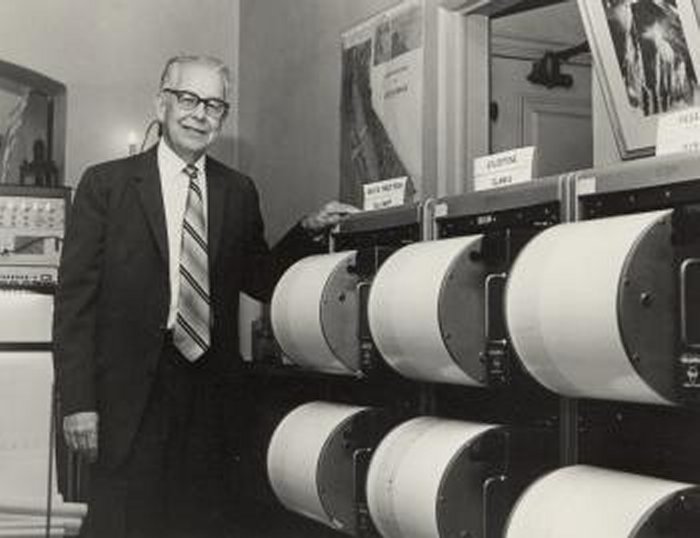On This Day In History: Seismologist Charles Richter Was Born – On Apr 26, 1900
AncientPages.com - On April 26, 1900, seismologist Charles Richter was born near Hamilton, Ohio, USA.
Richter became involved in earthquake engineering by promoting good earthquake building codes and proper training for people who live in earthquake zones.
Charles Richter & his seismographs. (USGS.com, 2007)
He graduated from the University of Southern California and then enrolled in graduate school at the California Institute of Technology, where he studied theoretical physics. Richter received his doctorate in 1928.
During this same year, the Seismological Laboratory of the Carnegie Institution in Washington hired him.
In 1935, while at the Seismological Laboratory, Richter worked with Beno Gutenberg, a German-American seismologist who made several significant scientific contributions by developing a rating scale for earthquakes.
Using a seismograph, he could measure earthquakes to know how much energy they release within the earth —a system better known as the Richter Scale.
(The Richter magnitude scale, also known as the local magnitude (M) scale, assigns a number to quantify the seismic energy released by an earthquake. It is a base-10 logarithmic scale.)
The Richter Scale - a mathematical device to compare the size of earthquakes - was superseded by the Moment Magnitude Scale in 1979.
The scale had the following classifications for earthquakes and their severity:
- Felt by instruments only
- Felt by sensitive people and sensitive animals
- Felt by many people Felt by everyone; pictures fall off of walls
- Damage
- Destructive earthquakes in populated areas
- Major earthquake causing severe destruction and destruction of nearby communities
- An earthquake more than one 100 million times more potent than category one (source)
For decades, the Richter Scale was the accepted and essential earthquake measurement.
On the Richter Scale (with the logarithmic basis), magnitude is expressed in whole numbers and decimal fractions.
For example, a magnitude of 5.3 might be computed for a moderate earthquake and a strong earthquake as a magnitude of 6.3.
Each whole-number increase in magnitude represents a tenfold increase in measured amplitude; as an estimate of energy, each whole-number step in the magnitude scale corresponds to the release of about 31 times more power than the amount associated with the preceding total number value.
In recent years, scientists have begun to use the Moment Magnitude Scale, which is much more precise than the Richter Scale.
In recent years, scientists have begun to use the Moment Magnitude Scale, which is much more precise than the Richter Scale.
AncientPages.com
Expand for references




















